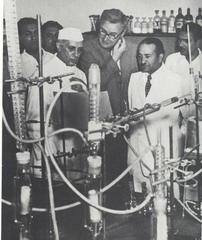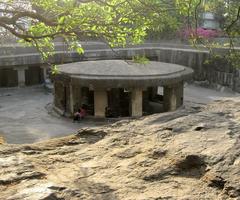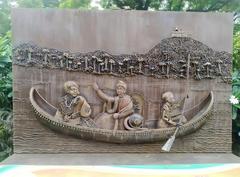Sarasbaug Pune: Visiting Hours, Tickets, and Historical Guide
Date: 03/07/2025
Introduction
Sarasbaug is a distinguished landmark in Pune, seamlessly blending the city’s vibrant spiritual, historical, and cultural heritage. Established in the 18th century by the Peshwas, Sarasbaug is renowned for its expansive gardens, sacred Ganpati Temple, and a legacy that intertwines religious devotion with political intrigue. Today, Sarasbaug welcomes thousands of devotees and tourists daily, offering tranquility, history, and a glimpse into Pune’s enduring traditions (TemplePurohit; Holidify).
This guide presents an in-depth look at Sarasbaug’s origins, significance, visiting information, and practical tips for an enriching experience.
Table of Contents
- Origins and Establishment in the Maratha Era
- Strategic Role During the Peshwa Period
- Evolution in Colonial and Post-Colonial Times
- Spiritual and Cultural Importance
- Sarasbaug: A Social and Recreational Hub
- Practical Visitor Information
- Conservation and Modern Developments
- Nearby Attractions
- Frequently Asked Questions (FAQ)
- Conclusion and Recommendations
- References
Origins and Establishment in the Maratha Era
Sarasbaug’s inception can be traced to the vision of Shrimant Nanasaheb Peshwa in the mid-1700s. He conceptualized a serene garden with a lake at the base of Parvati Hill, designed as both a retreat and a spiritual center. The highlight was an artificial island at the lake’s center, where the Sarasbaug Ganpati Temple was constructed in 1784 under Shrimant Sawai Madhavrao Peshwa. Dedicated to Lord Siddhivinayak Ganesha, the temple quickly became a spiritual focal point for Pune (TemplePurohit; Holidify).
Strategic Role During the Peshwa Period
Sarasbaug’s unique design—an island temple within a lake—also served strategic purposes. Historical records suggest that the Peshwas and their advisers held confidential political meetings here, using the natural seclusion provided by the water as a safeguard against eavesdropping. This blend of religious sanctity and political intrigue is encapsulated in the temple’s local moniker, “Talyatla Ganpati” (Ganpati in the Lake) (Holidify).
Evolution in Colonial and Post-Colonial Times
With the decline of the Maratha Empire and onset of British rule, Pune’s urban landscape evolved, and the original lake gradually dried up. Yet, Sarasbaug remained a cherished public space. The gardens were expanded, and the temple underwent several renovations to accommodate the growing number of devotees and adapt to changing times. The transformation of the surrounding area has ensured Sarasbaug’s continued relevance as both a religious and recreational destination (TravelSetu).
Spiritual and Cultural Importance
The Sarasbaug Ganpati Temple is revered by devotees across Maharashtra. The temple’s idol of Lord Siddhivinayak Ganesha is believed to grant wishes and is a major draw during festivals, especially Ganesh Chaturthi, when daily visitors can exceed 80,000. The temple complex also houses a museum with hundreds of Ganesha idols, showcasing the deity’s diverse representations and artistic interpretations (TemplePurohit).
Management of the temple falls under the Shree Devdeveshwar Sansthan, which also oversees the nearby Parvati Temple, ensuring the sanctity and upkeep of both spiritual centers.
Sarasbaug: A Social and Recreational Hub
Beyond its religious significance, Sarasbaug has long served as a gathering place for Pune residents. The 25-acre gardens, with manicured lawns, walking paths, and children’s play areas, are popular for morning walks, picnics, and family outings. The site regularly hosts cultural events, music concerts, and public celebrations, reinforcing its status as a vibrant community hub (TravelSetu).
Practical Visitor Information
Visiting Hours & Entry Fees
- Garden: 6:00 AM – 9:00 PM, daily
- Ganpati Temple: 5:30 AM – 10:00 PM, daily
- Entry: Free for both garden and temple. No ticket required (Pune Tourism; Holidify)
Accessibility & How to Reach
- Location: Saras Baug Rd, Municipal Colony, Pune, Maharashtra 411038
- By Road: Easily accessible by city buses, auto-rickshaws, and taxis.
- Railway: Approximately 3–6 km from Pune Junction.
- Airport: About 12 km from Pune International Airport (Mi Punekar; Tripoto).
- Wheelchair Access: Paved main pathways and ramps support wheelchair users and strollers; some areas may require assistance.
Best Time to Visit
- Season: October to February (pleasant weather, 28–32°C).
- Time of Day: Early mornings and evenings are peaceful and less crowded; avoid midday summer heat and monsoon downpours (Pune Tourism; Tripcrafters).
Facilities & Amenities
- Parking: Paid parking available near the entrance (Tripoto).
- Restrooms: Public toilets within the complex.
- Seating: Benches and gazebos throughout the gardens.
- Security: Personnel on-site, especially during festivals.
Food & Refreshments
- Street Food: Vendors outside the gates sell Pune specialties like pav bhaji, bhel puri, and pani puri (Pune Tourism).
- Picnic Lawns: Shaded lawns ideal for picnics; bring your own food and dispose of waste responsibly.
Photography & Events
- Photography: Permitted in gardens; respectful conduct expected inside the temple.
- Cultural Events: Ganesh Chaturthi and other festivals feature processions, music, and fairs. Music concerts and cultural programs occur seasonally (Tripoto).
Guided Tours
- Heritage Walks: Local groups periodically organize guided walks and tours, providing historical insights (Poojn.in).
Conservation and Modern Developments
Sarasbaug’s ongoing popularity has prompted conservation efforts, focusing on sustainable tourism, regular maintenance, and the promotion of eco-friendly practices. Recent enhancements include digital guides and augmented reality experiences, making the site accessible and engaging for a new generation of visitors (TravelSetu).
Nearby Attractions
Enhance your Pune visit by exploring nearby landmarks:
- Parvati Hill: Offers panoramic city views.
- Shaniwar Wada: Historic fort and palace complex.
- Dagdusheth Halwai Ganpati Temple: Another famous Ganesh shrine.
- Local Markets: Ideal for souvenirs and traditional foods.
Frequently Asked Questions (FAQ)
Q1: Is there an entry fee for Sarasbaug?
A1: No, entry to the garden and temple is free.
Q2: What are the Sarasbaug visiting hours?
A2: Garden: 6:00 AM to 9:00 PM; Temple: 5:30 AM to 10:00 PM.
Q3: Is Sarasbaug wheelchair accessible?
A3: Yes, main pathways are accessible; some areas may require assistance.
Q4: When is the best time to visit?
A4: October to February, especially early mornings or evenings.
Q5: Are guided tours available?
A5: Yes, several local guides and heritage groups offer tours.
Q6: What food options are available nearby?
A6: Numerous street vendors and eateries offer local snacks and meals.
Conclusion and Recommendations
Sarasbaug is a living testament to Pune’s rich confluence of history, spirituality, and community life. From its origins as a Peshwa-era sanctuary to its present role as a bustling hub of devotion and leisure, Sarasbaug invites visitors to experience the city’s legacy firsthand. For a fulfilling visit, plan around optimal hours, respect local customs, and explore the surrounding historical sites.
Stay updated on events and travel tips by downloading the Audiala app and following local tourism channels. Embrace Sarasbaug’s serene gardens, vibrant festivals, and enduring heritage on your next Pune adventure.
References and Further Reading
- Sarasbaug Ganpati Temple and Garden: A Complete Guide to Visiting Hours, Tickets, and Pune Historical Sites (TemplePurohit)
- Sarasbaug Ganpati Temple Visiting Hours, Tickets, and Cultural Significance in Pune (Holidify)
- Visiting Sarasbaug Ganesh Temple in Pune: Hours, Attractions, and Travel Tips (TravelSetu)
- Practical Visitor Information on Sarasbaug (Pune Tourism)
- Additional sources: Mi Punekar, Tripoto, Poojn.in, Bhakti Bharat, Tripcrafters, Thomas Cook




